Customer churn rate is a measurement of how often new customers try a product or service and then stop using it. It is most useful in all types of subscription services - telecoms, internet operators, electricity suppliers or insurances. The churn rate describes how "loyal" our clients are, or how frequently they resign or move to competition. Considering fact, that acquiring new clients is usually much more expensive than retaining old ones, minimalisation of customer churn lets increase the sales without much of an investment.
Introduction
In this post we are going to describe an analysis of a dataset of a telecom operator. We would like to discuss what are the patterns accountable for customer churn and create a algorithm deciding whether a client is due to leave or stay. Operator will learn about the structure of his client base and which of his services does not satisfy them. This will give operator opportunity to see real reasons why clients change their service provider and prepare better offer to retain the client.
We would explore a dataset thanks to IBM, that has already been anonymised and checked for consistency.
Analysis - factors determining whether customers leave
Purpose of the analysis is to destill all groups that are significantly probable to change an operator. There are three main collections of people showing discontent and churn.
Let’s start with seniors. They are about to contain 16% of customers, but 41% of them tend to leave an operator, which is nearly twice as often as younger people (23%). It could be caused by a offer that do not fit their needs.
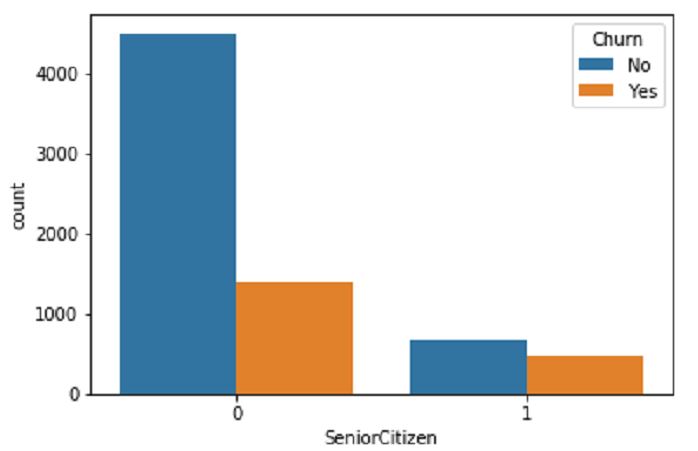
Next factor is type of an offer type. People who choose month-to-month billing are tremendously more likely to leave comparing to longer periods such as one or two year. We cannot tell how much of them are for instance foreigners interested only in short term contract. Rest of them should be encouraged to change a contract to billing in a longer period.

Unsuprisingly there is a pattern showing that the cheaper the offer is, the less people tend to leave company.
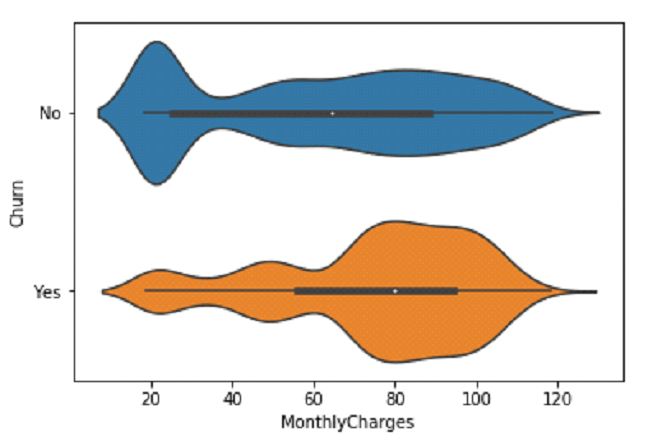
Lastly there is a trend showing dissatisfaction in fiver optic internet service, which quality or speed could be way worse than other telecom companies.
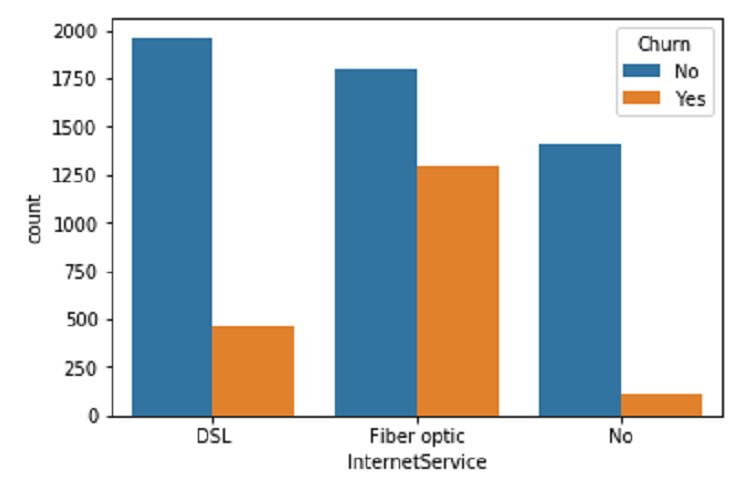
There is a analysis drawback which is lack of information about when have a customer left the company. This lead us to the point where we cannot find out whether offer quality have been improved. We would assume in further calculations that data concern actual offers.
Analysis - are there any other possible factors?
We visualized a correlation matrix which shows linear dependencies between indices. High value does not mean per se that there occurred cause and effect sequence. This matrix does not provide any special correlations. The only highly connected pairs are obvious ones such as total charges and tenure.
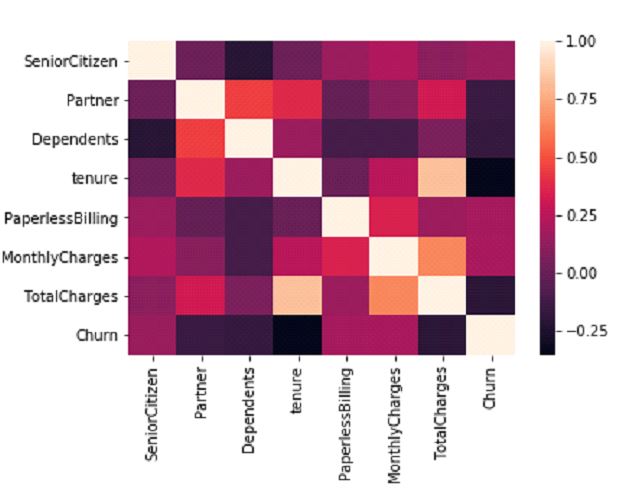
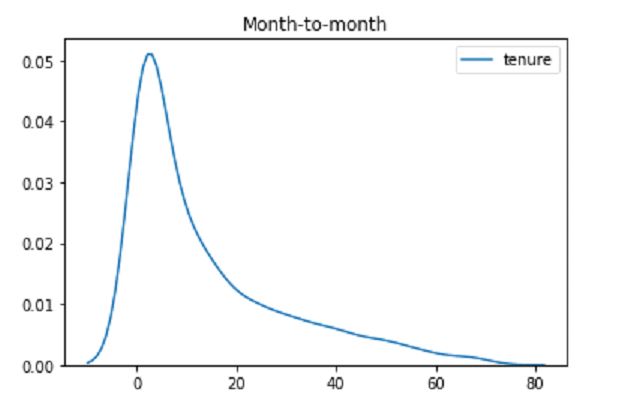
We compared critical customer churn time, billing month-to-month. It shows a massive trend to resign after first month. It could consist of costumers that were not dissatisfied but needed only short term offer.
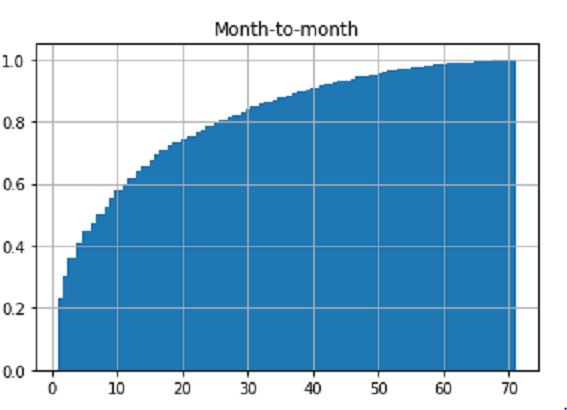
Predictive models - learn in advance what client would do
After statisfical exploration we prepared prediction model in order to forecast which clients are likely to resign. That knowledge can give opportunity to prepare better offer and retain the client.
We assumed, that mistake of proposing better offer to a person, who would be unlikely to leave anyway is better than not offering one to someone likely to leave.
First model, based on the whole dataset classified correctly 80% of clients whether they stay or leave. Then we split dataset into particular groups:
- seniors
- pre-paid offers
- online service clients.
Seniors group shows 70% accuracy, pre-paid group 65% and online service 83%. What’s interesting, in all the groups a key factor was the price of offer.
Conclusion
Our main goal was to identify the resasons and minimize the number of customers who leave. Using data analysis methods, we were able to identify potential reasons of dissatisfaction, what will allow the company to take appropriate steps and prepare a better offer.
We have created predictive models, which correctly classify behaviour of 4 out of 5 clients
Thanks to those models, company can act in advance to retain the client - for example by creating an individual offer on a special terms.




